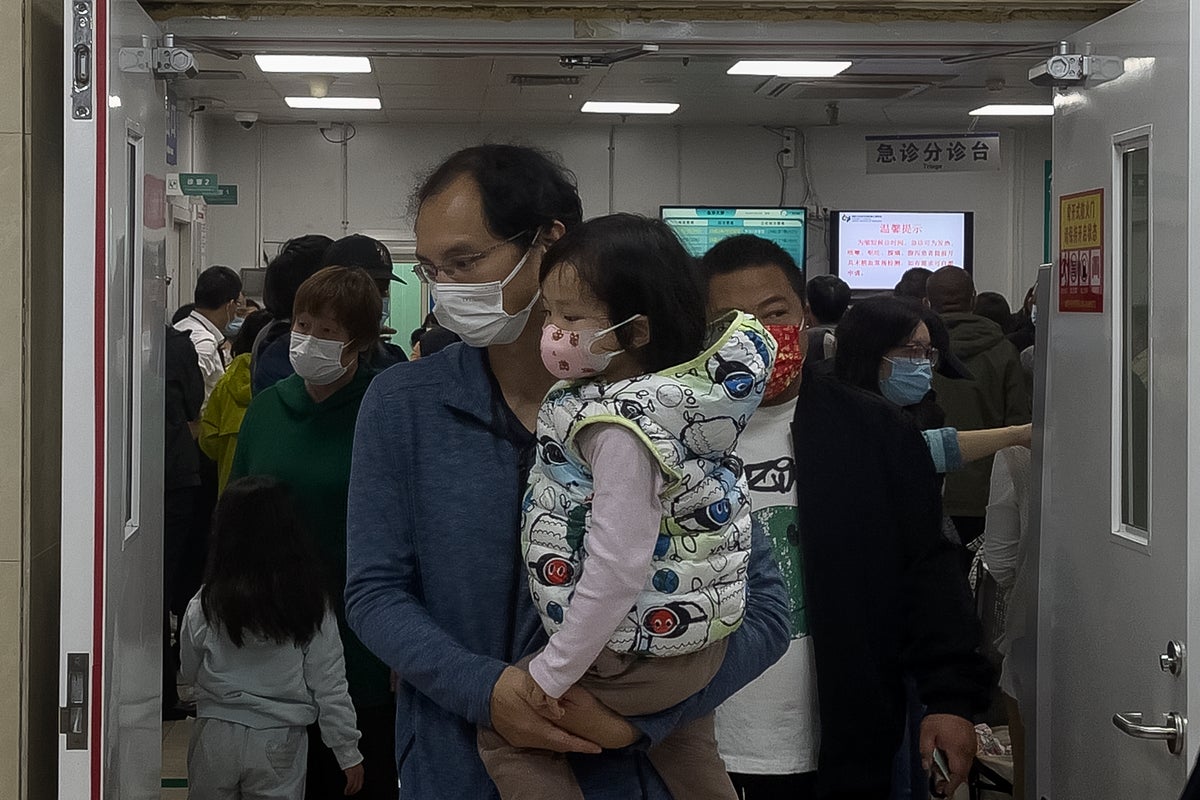
China is currently weathering a wave of unexplained respiratory illnesses among children, leaving global scientists rushing to find out why – and to establish whether it could spread further afield.
The World Health Organisation has issued a formal request to China for data on the illnesses, after public disease surveillance system ProMED – which helped raise the alarm over the emergence of Covid, Sars and Mers – warned about reports of “undiagnosed pneumonia” on 21 November.
“With the outbreak of pneumonia in China, children’s hospitals in Beijing, Liaoning and other places were overwhelmed with sick children, and schools and classes were on the verge of suspension,” ProMED said, citing a report by Taiwanese outlet FTV News.
China’s health ministry has asked local authorities to increase the number of fever clinics, but health authorities insist they have found no “unusual or novel diseases”, and say the wave of illness is linked to the simultaneous circulation of several types of pathogens, most prominently influenza.
While there is still insufficient data to offer a conclusive verdict on the mysterious wave of illness, experts in the UK stressed there is no evidence yet to suggest a novel virus is to blame.
Instead, it is more likely related to China’s lifting of Covid restrictions last December – and could also be indirectly linked to the bout of serious hepatitis witnessed in hundreds of children in the UK last year.
“I am not going to push the pandemic panic button on the basis of what we know so far, but I will be very keen to see the response to WHO from China and see the WHO’s assessment following that,” leading public healh expert Brian McCloskey CBE, told Reuters.
Dr Zania Stamataki, a viral immunologist at the University of Birmingham, was more explicit, saying: “There is currently no evidence that the increase in paediatric pneumonia cases in China may be due to a new virus.”
The director of Tianjin Children’s Hospital said its staff had been overwhelmed, with more than 13,171 patients were admitted to the hospital’s two campuses in 24 hours— (AP Photo/Andy Wong)
Her remarks were also echoed by Professor Francois Balloux, of University College London, and the University of East Anglia’s Professor Paul Hunter, who said that he would expect to see may more infections in adults if it were to be an epidemic caused by a novel virus.
“The few infections reported in adults suggest existing immunity from a prior exposure,” said Prof Hunter.
Pointing to the reported discovery of pulmonary nodules – abnormal growths spotted in the lungs – in some patients’ chest X-rays, Prof Hunter said this tends “to suggest a bacterial rather than viral cause”.
Pulmonary nodules can be spotted in children with bacterial pneumonia, while secondary bacterial infections in those with flu can also cause “patchy changes” on chest X-rays, he said, adding: “There may also be more than one infectious cause of the current epidemic.”
Many experts also highlighted the fact that China is entering its first winter since lifting years-long lockdown measures last December, which Prof Balloux said “must have “drastically reduced the circulation of respiratory bugs, and hence decreased immunity to endemic bugs”.
“This phenomenon of ‘lockdown exit’ waves of respiratory infections is sometimes referred to as ‘immunity debt’,” Prof Balloux said, adding: “Other countries, including the UK, experienced big waves of respiratory infections and hospitalisations in kids during their first winter after pandemic restrictions had been lifted.
“Since China experienced a far longer and harsher lockdown than essentially any other country on earth, it was anticipated that those ‘lockdown exit’ waves could be substantial in China.”
He added: “The current wave in China is likely caused by different respiratory pathogens such as RSV or the flu.”
Children and their parents wait at an outpatient area at a children hospital in Beijing— (AFP via Getty Images)
Professor David Heymann, of the London School of Hygiene and Tropical Medicine, agreed that there was likely a background of seasonal infections behind the wave of illness – but added that “the challenge is to discern the outbreaks and determine the cause”.
“There are many different known viruses that could be the cause and these must all be sought in testing. At the same time isolation and sequencing will also provide answers,” he said.
Also highlighting this background of normally harmless viruses as potentially significant, Dr Stamataki went further in saying: “As restrictions lifted and children mixed, it is likely that single respiratory infections or coinfections occur in a background of already circulating harmless viruses, which may cause a more severe disease.”
Recent research suggests that people can suffer tissue damage when they contract more than one of these harmless viruses at the same time, noted Dr Stamataki – which may have been a factor in the hundreds of cases of serious hepatitis which occured in children last year, many of them in the UK.
That outbreak was not fatal in the UK, but at least a dozen children had required liver transplants as of last July.
“It will be very interesting to see the data from the infections detected in the children with pneumonia in China,” said Dr Stamataki.
Stressing that there remains insufficient information on which to make a definitive assessment of the epidemic’s wider risk, Prof Hunter said: “My feeling is that it won’t lead to a public health emergency of international concern, but I would not totally rule out that possibility until we have a definitive diagnosis.”







